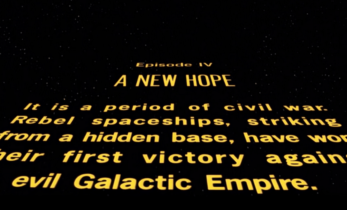Greater than 4 minutes, my friend!
The limitations of a quality assessment
There are many tools available to assure the quality of a translation, both automated and by means of a human intervention. And while these tools do a good job in checking and ensuring the quality of a translation they can still be lacking in making sure the quality is top quality. Put simply, quality controls have their limits as well. It is worth taking that into account while doing a quality check.
The necessity of a quality control
Quality control is an indispensable aspect of every company delivering products and services. Especially if these products and services are of a sizeable value or when a slight deviation can make a big difference in outcomes, everything should be done to ensure the quality of the end product. It might therefore not be a surprise that in the world of translations, quality controls and assurances sometimes take second place in the overall translation process. Sometimes, because of the emphasis on quick deliveries and low budgets quality controls – or quality itself – get neglected entirely. For clients that value a great translation and know that a small typo can have costly consequences, quality and quality control are still worth the price – and the delay.
For them there are different ways to measure and ensure quality: by automated means and by having the translations checked by a human translator.

Results of an automated quality assessment in MemoQ
Automated Quality assessment tools
The emergence of CAT tools has made it easier for translators and end clients alike to translate source texts and deliver them as a well-formatted translation. Translators can load a source text into their CAT tools and then translate the text sentence by sentence. CAT tools normally do not show images or formatting, but use tags instead. As long as these tags are placed into the target text, the translation will be generated in exactly the same formatting as the original document. Many CAT tools nowadays run a quick quality assurance or verification procedure that enables translators to check whether a translation fulfills the requirements to deliver the translation. After a translation, they can scan for obvious errors like missing tags, inconsistent terms and use of forbidden terms. The QA tool then generates a report and enables translators to correct their work. That way they can ensure that the translated document will not generate errors when opened, or contain embarrassing or annoying content. On the other hand a QA or verification process does not scan grammar and spelling errors. While most CAT tools nowadays contain a spelling and grammar check, both these checks and a quality assessment of the translation can still leave a translation with embarrassing errors.

Details of a quality assessment form in MS Excel
Quality assessment by a human translator
If an automated quality assessment doesn’t fulfil the requirements of a client and he demands more than a document that is technically sound, clients might choose a quality assessment by a human translator. Sometimes this quality assessment is a mere proofreading check, where the colleague compares a translation with its source text and makes remarks on errors and ways to improve the translation. In other situations, the translation is checked and notes are made on a quality assessment form that automatically calculates whether the translation fulfills a certain QA requirement according to the cells to be filled in. That way the quality assessment uses the input of a professional to make sure that the quality is above par.
The limitations of a QA
Both the automated and human quality assessments have their pros and cons. Where the automated QA makes sure that obvious errors are removed and a technically sound document will be delivered, it lacks the linguistic judgement to make sure that the translation is of a high quality. The human assessment, however, focuses on the translation standard but often is unable to find and fix technical errors in a document, such as missing tags and other structural information. Apart from the technical point of view a human quality assessment is also limited by the restrictions that impose a quality assessment form on the professional who checks the quality of the translation. A quality assessment form does not take into account the form of a translation (whether it is a transcreation or creative translation) and only offers editors the chance to correct the type of error and indicate its severity. While a linguistic error should always be marked as an error, sometimes issues in a document are marked as errors when they are not even an issue according to the initial translation instructions. And while assessment forms are meant to ensure consistent quality control among different translators, they are sometimes too focused to enable some freedom of judgment; on the other hand, the forms’ instructions may still allow room for interpretation, therefore making it difficult for an editor to judge correctly and for a professional translator to take the QA results seriously.
The only way to take a quality assessment seriously is by not taking it too seriously. Of course QAs do a great job in ensuring that the most important issues are resolved and all errors are removed. But be assured that quality control can also lack control. Every quality assurance has its margin of error and unless new ways of quality assessment are found these will not cease to exist.




